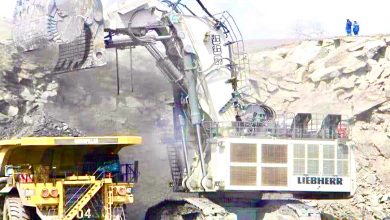Zimbabwe’s Mining Industry Growth: Challenges and Opportunities

Zimbabwe’s mineral reserve is reported to be vast. The nation boasts of having predominant minerals which include platinum group metals (PGM). Also, chrome, gold, coal, lithium and diamonds are in the country. The nation boasts the second-largest platinum deposit and high-grade chromium ores in the world. This is with approximately 2.8 billion tons of PGM and 10 billion tons of chromium ore.
However, with all this, the nation cannot provide social protection for its citizens. These reserves would enable the people of Zimbabwe to enjoy affordable if not free health. Moreover, these resources, if mined and beneficiated before export, will improve the nation’s GDP. Unfortunately, corruption, leakages, greed and mismanagement is hindering progress in the sector. The industry faces a number of challenges and below are some of them.
Zimbabwe’s Mining Industry Challenges
The mining sector, a central economic sector in Zimbabwe, was severely impacted by COVID-19. The sector’s recovery and stabilisation efforts must balance profitability with human rights considerations, including workers’ and community rights 1. Moreover, long working hours and overworking are challenges that need to be addressed. Despite regulations mandating an eight-hour shift, there are reports of overworking by up to 12 hours per day. This increases the risk of accidents and injuries. This weighs heavily on Zimbabwe’s mining industry as the workforce is the backbone of this sector. There is need to ensure that workers are safe as this is vital.
Also, there is the impact on the Diamond Industry. The international diamond industry’s recession due to COVID-19 has heavily affected Zimbabwe’s diamond industry. The lockdown disrupted domestic mineral production and trading, with significant losses reported 4. Additionally, there are the ambitious mining plans at risk in Zimbabwe. Zimbabwe’s ambitious plans to improve mining production and encourage domestic miners to grow their operations were derailed by the pandemic. The “use it or lose it” policy faces challenges due to falling demand and price drops, threatening the sector’s long-term economic prospects 4.
Zimbabwe’s Mining industry opportunities
Diversified Mineral Resources
Moreover, Zimbabwe boasts the second largest PGM deposit and high-grade chromium ores in the world, with significant potential for growth. The country’s PGM sector is a major contributor to the country’s GDP and exports 1. Also, the diamond industry has shown significant growth, with the Chamber of Mines projecting significant growth in this sector. The government’s efforts to combat smuggling and increase production through direct export options for large-scale gold mining companies will boost the sector 1.
Additionally, the coal and lithium sectors are also projected to grow, with Zimbabwe’s lithium deposits being the largest in Africa and sixth in the world. The government aims to meet 20% of the world’s total demand for lithium through the development of its resources 1.
Government Initiatives and Policies
The government proposed a revised Mines and Minerals Act Amendment Bill to make the sector more progressive and investor friendly. Although not approved before the Ninth Parliament dissolved, this initiative indicates a commitment to attracting more investment and improving the mining sector’s regulatory environment 1. This in turn will improve Zimbabwe’s mining industry.
Furthermore, the government increased foreign exchange retention to 75% from 60% for mining companies, aiming to address challenges related to foreign currency shortages. This move is expected to affect real retention rates between 60 and 65 percent 1.
Infrastructure and Supply Chain Opportunities
Finally, there is a significant opportunity to provide heavy underground mining machinery and other supplies, as well as transportation infrastructure and materials, including railways, and bespoke power generation alternatives. The government’s interest in increasing domestic production of value-added mineral products will require larger capital investments in the mining sector 1.
In conclusion, Zimbabwe is a country facing many challenges. It also has many opportunities for growth. Focusing on Zimbabwe’s mining industry, the nation boasts of having predominant minerals which include platinum group metals (PGM). Also, chrome, gold, coal, lithium and diamonds. Beneficiation, dealing with corruption and mismanagement will greatly improve the industry and the nation’s GDP. Additionally, the government’s initiatives to make the sector more investor-friendly and its focus on increasing domestic production of value-added mineral products are key factors driving these opportunities.




